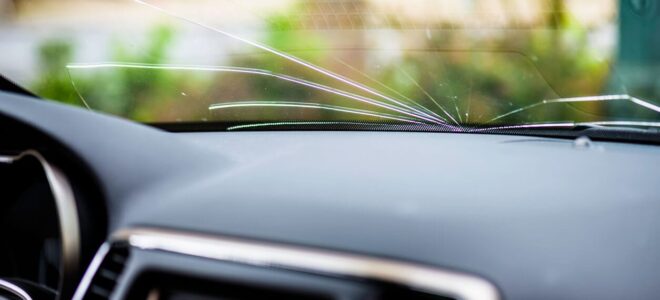
When you’re driving down a stretch of highway on a beautiful day, you can sometimes get a feeling of freedom and confidence that isn’t always easy to find; that’s why the idea of hitting the open road is so popular. But that feeling can get taken away the instant a tiny rock gets kicked up from under another vehicle’s tire and launches right into your windshield. It’s not uncommon for windshields to get damaged in one way or another, and when this happens to you, you need to be asking yourself one question that will dictate how you should respond, as not every incident requires the same treatment. When you notice damage to your windshield, you should be asking yourself, “Is it a chip in my windshield or a pit?” Asking this one simple question will help you determine your next course of action to ensure you keep your vehicle safe.
Is It A Pit Or Chip?
At first glance, it may seem as though calling the damage a pit or a chip is simply a semantic difference with no meaningful distinction between the two, but this is incorrect. Yes, both pits and chips in a windshield are considered structural damage, often caused by weathering or sudden impacts, but the type of damage is slightly different, and one is more likely to cause the damage to spread and needs to be taken care of much more quickly. Below, we take a look at the similarities and differences between a pitted and a chipped windshield.
Windshield Pitting

Source: taylorautoglass.com
Pitting is generally considered as less severe damage when compared to chips. A pit is surface structural damage on a windshield that doesn’t break through the top layer of safety glass. The shallow nature of pits means that car owners probably won’t need to make plans for a windshield repair appointment because the safety concerns probably won’t be as pressing compared to a chip. The most common problem with pits is that sometimes when sunlight hits them at just the right angle, they can cause glare that may impede your vision while driving. This is much more of a concern for people with older cars that have experienced significant windshield weathering over the years. For windshield repair you can check superautoglasscalgary.ca.
Since pits are so shallow, they can’t be repaired, so if you accumulate enough pits over the years, the only way to have a fully clear windshield is to replace your old one. But if you notice a small pit in the bottom corner of your windshield, there isn’t much cause for concern. Since pits don’t make it through the first layer of glass, there is an extremely low chance of the pit growing into more severe damage like a crack that needs to be repaired immediately.
Windshield Chipping
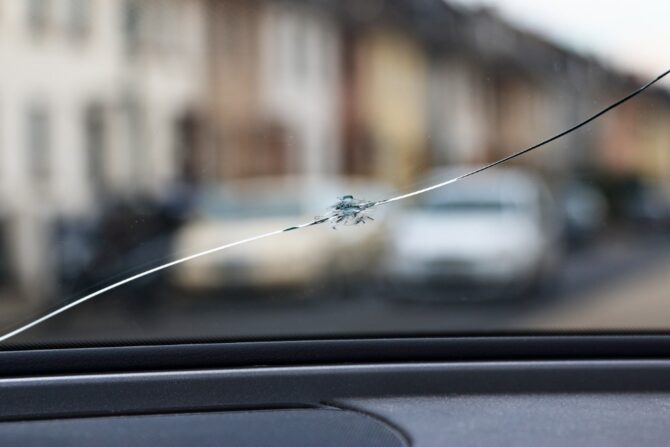
Source: clearestglass.com
The most significant difference between a pit and a chip is that chips break through the top layer of glass, allowing air, moisture and debris to infiltrate the damaged area. These conditions set the table for chips to turn into cracks that can spread across your windshield, obstructing your visual field and compromising the structural integrity of the glass. When you spot a chip, don’t hesitate to book an appointment with a local windshield repair shop like Super Auto Glass Calgary to ensure your car is safe to drive.
Now, when you get home, after that rock we talked about earlier smashed against your windshield, and you get out to inspect the damage, it would certainly help to know what the different types of chips are so you can decide if you should get the chip fixed or if your windshield is now beyond repair. The three types of windshield chips are bullseye, half-moon, and star chips.
Bullseye
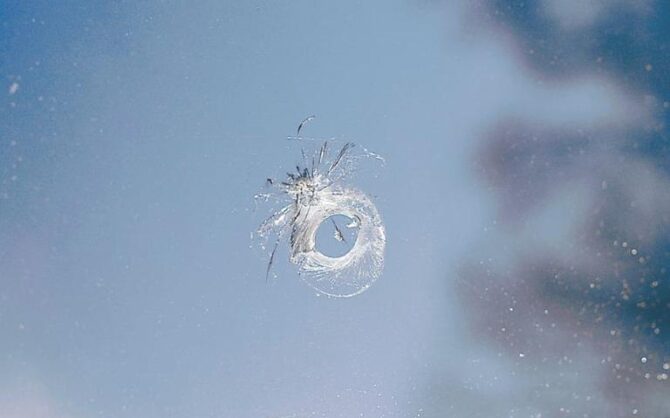
Source: mitchellrepublic.com
Intuitively named, bullseye chips look like a bullseye target, minus the red and white, of course. They look like a bullseye because they have a separated cone-shaped crater in the glass. Bullseye chips are repairable as long as they have a diameter of less than 1 inch.
Half-Moon
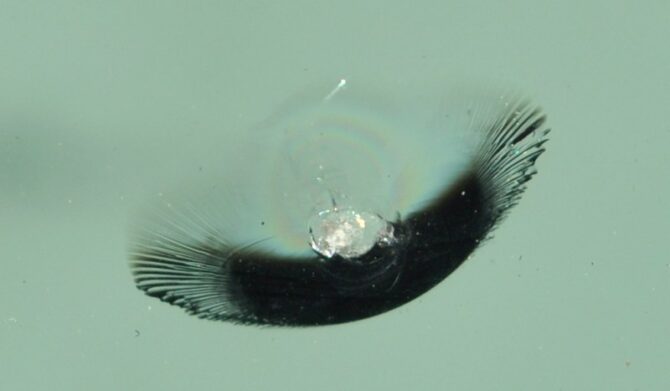
Source: gomechanic.in
A half-moon chip is similar to the bullseye, but they are half-circle-shaped, as you may have guessed. If you have a half-moon chip, it was likely caused by an impact that came in on an angle instead of straight on. Again, if the diameter is less than 1 inch, it is considered repairable.
Star Break
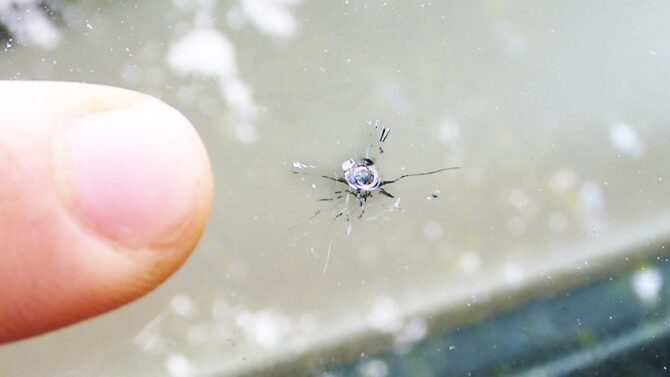
Source: mitchellrepublic.com
Lastly, star-shaped chips come with a unique twist that the bullseye and half-moon chips don’t. Star breaks are named for the star-like appearance of cracks that come from the central point of the chip. These cracks may be a direct result of the impact, but most likely, if you see this pattern, the chip is beginning to spread, and you need to see a professional for windshield repair as soon as possible. As long as the diameter is less than 3 inches, a star break can likely be fixed.
Suppose there is a chip on your windshield that doesn’t fall into these three categories, no need to panic. Naturally, not all chips will fall perfectly into these shapes because they are all created under unique circumstances.
Get A Professional Inspection
Even if you are a novice with cars and windshields, you will still be able to identify the above chip types by doing a basic look-over. Of course, nothing can compare to the knowledge and expertise of an experienced professional. So, even if you think your windshield is beyond repair or doesn’t need to be fixed up at all, it’s always a good idea to get the damage inspected by an expert before you make any decisions that could compromise your safety and your wallet.
Chipping and pitting on the windshield is a pretty common issue that happens to many cars. In fact, about half the cars out there on the road whose windshields are chipped or pitted, the owners don’t even realize these chips and pits are there until they become much larger or cracks start to occur. Check your windshield regularly, and if you find any issues at all, go to a local professional shop like this one for quick windshield repair or replacement if necessary.



